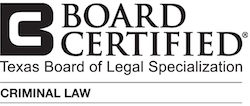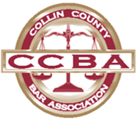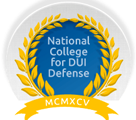Texas DWI Case Process
In Texas, the entire length of the DWI case process can take anywhere from a couple of months to resolve, all the way to a couple of years. This time requirement usually is dictated by the county and court where your case resides. Usually in larger counties a disposition will take a greater amount of time because some courts have very busy dockets. Likewise, smaller counties usually have less cases, which means an increased availability for the courts to proactively come to a resolution on their cases.
Regardless, there usually will be at the very minimum a couple of months, and usually more, before a defendant will have to make the decision whether to take a plea bargain, or proceed with a trial. If you decide to set your case for trial, it may take anywhere from a couple of weeks, to over a year, before the actual trial will occur. Each DWI case is different in nature and the overall length of the process depends upon a variety of factors. Some of these factors include: the county where the arrest was made, the law enforcement agency that made the arrest, the specific court in the county where the DWI case is filed, the seriousness of the facts of the case (often DWI cases involving accidents take time to investigate), and also whether a chemical test was obtained (blood test cases often need to be sent for analysis to a lab for screening). The bottom line is that whether the case is a 1st-time DWI arrest, or a serious Felony, the amount of time will vary on a case by case basis. Regardless of this, it is a wise decision to seek the services of an experienced DWI Defense Attorney as quickly as possibly after the arrest. The sooner your DWI Attorney can begin working and analyzing the facts of your case, it is almost always the better.
1. THE ARREST
As you might assume, it is obvious that being arrested is the first step of the DWI process. In order for an arrest to be legal and valid, the arresting officer must have a "reasonable suspicion" to initiate a traffic encounter with a motorist. After the traffic stop is intiated, or after an encounter is made (possibly through the law enforcement "community-care taking" function), the officer will need to establish the requisite level of "probable cause" to make an arrest for the suspicion of Driving While Intoxicated. The investigating officer usually attempts to establish "probable cause" to justify an arrest for DWI by on the administration of a series of exercises traditionally known as the "Standardized Field Sobriety Tests" (SFST's). Once the investigating officer feels, in their own subjective opinion, that the standard has been met establishing probable cause, they will then place handcuffs on the suspected driver and transport them to a police station. At a certain point in this process, usually either in the patrol vehicle or at the police station (most commonly in the intoxilyzer room), the arresting officer must properly recite what is known as the "DIC-24 Statutory Warning". This warning is mandated by statute by the Texas legislature and it must be read in all DWI arrests. The language of this "DIC" warning is usually quite confusing to those who have never heard it before, and it's not unusual for someone to be unsure as to what it means. In a nutshell, the "DIC" warning apprises the arrested driver the consequences of either a refusal, or a failure, of a chemical test. It only references, however, what will occur regarding the license to drive of the individual to operate a motor vehicle. At the end of the recitation of the "DIC" warning, the arresting officer should then verbally question whether the will either consent, or refuse, the taking of a chemical specimen. The answer is usually denoted in an appropriate box where the arresting officer will ask the arrested individual to evidence their answer with their signature. Often the individual chooses not to sign the document, in which case it is deemed as a refusal. If the individual agrees to provide a chemical speciment at the police station, the officer will then proceed to have a breath and/or a blood test administered.
2. Posting Bond
Once arrested, at a certain point the individual will be required to go before a "Magistrate Judge" who will set a bond amount. The duties of the arresting officer and magistrate judge during this phase of the process is governed through the Texas Code of Criminal Procedure: Section 15.17. The bond amount will vary based on a variety of factors, including any prior criminal record, the severity of the facts of the case (whether it is a misdemeanor or a felony), whether the individual has ties to the community, etc. In almost all DWI cases, unless very rare circumstances apply (and in almost every misdemeanor DWI arrest), an individual has the absolute right to have a bond amount set within 48 hours from the arrest. In some counties, an Attorney can facilitate this process even quicker and can in some circumstances help avoid the requirement of being seen by a Magistrate Judge. For example, in some counties an Attorney can file for a "Writ of Habeus Corpus", or a "Writ Bond", which can help effectuate a much faster release. Because the filing of an "Attorney Writ Bond" prevents the individual from being required to see a Magistrate Judge before a bond amount is set, which obviously can save a large amount of time.
When a bond amount is ultimately set, the individually generally will have several factors to select from when securing the release from jail. If you call The Law Offices of Carl David Ceder at 214.702.CARL(2275), our office can help apprise you of what options are available. To learn more about the Jail Release process, please read here.
3. Conditions of the Bond
There may be certain requirements placed into effect by a judge (or magistrate judge) as a condition of being released on bond. The most common condition related to an arrest for DWI is being required to install a "deep-lung" device on your vehicle, most commonly referred to as "ignition interlock." Ignition interlock is usually mandated as a condition of bond in a DWI arrest where there is a prior conviction. In some circumstances, it is within the discretion of the judge where the case is filed as to whether the device will have to be installed as a condition of bond. Other scenarios where ignition interlock may be requirement are cases where it is determined that a chemical specimen was obtained, either by breath or blood, and the BAC level was found to be a 0.15 or higher, and in some courts, if the facts leading up to the DWI arrest stemmed from a vehicular accident.
4. DWI Filing of Information/Indictment
The District Attorney's Office will rarely dismiss a charge of DWI outright, although it does happen on rare occasion. A prosecutor that works in intake at the District Attorney's Office will review the offense report submitted by the law enforcement agency that made the arrest, and then make the decision as to whether the case should be filed. Almost every DWI arrest is accepted for prosecution. If the charge is classified as a Misdemeanor, the case is filed by "information" by the District Attorney's Office. If the charge is classified as a Felony, an "indictment" would have to occur as a result of a finding of a "Grand Jury" convened to preside over the matter.
• The approximate length of time it usually takes for a misdemeanor charge of DWI to be filed and a court date issued varies based on the county, but usually occurs within 30-60 days.
• The approximate length of time it takes for a felony DWI to be presented to the Grand Jury for a possible indictment usually will be much longer. It may take several months before an indictment is issued, and a court date set.
5. Court Settings
There are a variety of court settings that occur in a criminal case, and many counties utilize different names for each. Generally speaking, a DWI case will consist of the following: 1) First Appearance; 2) Announcement Settings; 3) Plea Settings; 4) Pre-Trial Settings; 5) Trial Settings (either by Judge or Jury).
• First Appearance - The first setting is traditionally referred to as the "First Appearance." At this setting, usually the court and the District Attorney will be informed (if a "Letter of Representation" has not already been filed) whether or not you will be represented by counsel. If you have representation, your Attorney may discuss the overall aspects of your case with the prosecutor assigned. If it's available, a copy of the police report(s), copies of any videos available, and any other relevant discovery may also be obtained.
• Announcement Settings - There are usually two or more "Announcement" settings, though some courts may refer to it in a different manner. The purpose of the Announcement settings is to inform the court what the status of the case is, and what the intention is on whether or not the case will be set for a plea or a trial. Depending on which court your case was assigned and in which county, your presence may or may not be required. Your attorney should advise you on whether or not your attendance will be expected.
• Plea Settings - If you decide to accept a "plea bargain" in lieu of proceeding to trial, your case will generally be set for a "Plea Setting." At this setting, you likely will enter a formal plea before the court accepting the terms of the plea agreement offered by the District Attorney. After a plea is entered, you will then make the necessary arrangements to pay any fines and court costs, possibly meet with the probation department if tht or make arrangements to serve out your sentence.
• Pre-Trial Settings - Often a case can be set for a contested setting before actually proceeding to trial. An example of this would be a "Motion to Suppress." A Motion to Suppress would be a contested hearing where a judge would decide whether a certain piece of evidence should be excluded at trial, such as information that was obtained illegally by law enforcement. Also, some courts require a "Pre-Trial" setting sometime before the trial date where any preliminary issues will be ruled upon to expedite the process. Often, the Pre-Trial setting is held the week before the actual trial date. At this setting, the judge of the court will also advise whether or not the case will be reached on the trial date. If it is reached, you will be required to be present on the trial date. If the case will not be reached, your case will be then be reset for another trial date in the future. Often certain types of cases take precedent over others, such as if the Defendant is currently in custody. Trial cases where the Defendant is incarcerated generally receive preferential treatment to get the case resolved. to be reset.
6. Trial
If you decide to plead "Not Guilty" and refuse the District Attorney's plea bargain offer, your case will proceed to trial. At a trial setting either a judge or a jury will decide whether or not you are "Guilty" based on the evidence heard. The burden of proof in a criminal trial is guilt "Beyond a Reasonable Doubt."
If the case is not a "Trial Before the Court" (TBC), which is a trial by judge, the first phase will begin with jury selection. This process is called "Voir Dire." Voir Dire is the process used in courts which gives the attorney an opportunity to speak with the potential jurors about their thoughts and beliefs regarding different situations. In a misdemeanor DWI case, the court will bring in about 20-25 people to sit on the jury panel for Voir Dire. When jury selection is complete, ultimately, 6 jurors will be seated to preside over the case.
After the jury is sworn in, the next phase of a trial would be an opening statement to the jury detailing, more or less, what they can expect the evidence will show throughout the trial. After completion of the opening statements, the State of Texas will then begin their presentation of the evidence against you. Usually in a DWI trial this consists of at the very least the investigating officer who made the arrest. If other officers were present, they may be called as well to testify. If the DWI case is one where a chemical specimen was obtained, then certain experts will usually be called to testify. These experts for the state usually include the person who operated the breath test machine (known as the "Breath Test Operator"), and possibly the Technical Supervisor who will testify to the maintenance of the specific breath test machine that was used to collect the sample. The state may also call as many witnesses as they wish if they believe it will help their case, including any possible fact witnesses who may have been present and who can testify to information which may be helpful to the jury. Often the state will call witnesses who may have personally observed the Defendant actually operating and driving the vehicle.
After the state rests their case-in-chief, the Defense will then be allowed to present any evidence it wishes to submit to the jury for consideration. Often the Defense simply chooses to rest and not to present anything if they think this is the best strategy. At this time, the Defense will have the opportunity to call any relevant witnesses to provide relevant evidence for the jury to consider, including certain fact witnesses who may have observed the Defendant consuming alcohol the night in question. The Defendant can also opt to testify as a witness, or they can choose to elect to utilize their 5th Amendment right to not incriminate themselves by providing testimony at trial. If the Defendant elects to not testify, the jury will be instructed not to hold this against them in deliberations. If the Defendant has chosen to utilize any experts in a field related to DWI Defense, they would also be able to testify during this time on any area of their expertise relevant to the case. Most traditionally this would include experts in Standardized Field Sobriety Tests (SFST's), experts with knowledge of the Intoxilyzer 5000, and/or possible forensic toxicologists in blood test cases.
After both sides present their case-in-chief and both sides rest and close, the Judge will then read a Jury Charge giving the Jury members instructions as to how they should deliberate, and what the appropriate law is given the facts of the case. After this instruction, the jury will then be sent to deliberate and will be asked to either give a verdict of "Not Guilty" or a "Guilty" based on the evidence presented at trial. If the jury cannot come to a unanimous verdict, eventually the Judge will declare a "Mistrial." If this occurs, the jury will be dismissed from their service and the case will possibly be heard by a future jury to decide. If the jury declares the verdict to be "Not Guilty" (which would be an"acquittal") following deliberation, the Defendant will be free from any further prosecution of the charge. The Judge will usually request that the Attorney apprise the Defendant of their legal right to an expunction of all records related to the charge following the acquittal.
7. Possible Punishment Phase
If the Defendant is found "Guilty" as charged, the case will then proceed to the punishment phase. During this phase, the state may introduce additional evidence that may not have been admissible in the original "Guilt-Innocence" phase of the trial. Information such as any prior criminal history may be allowed to be considered when an appropriate sentence is to be assessed. The Defendant can usually elect to have either the Judge or Jury make the sentencing recommendation, unless certain elements exist with the charge (such as an affirmative finding of a "deadly weapon"). Most individuals decide to have the judge assess the punishment in a DWI case, because it usually is easier to predict how a judge will set punishment given the facts of the case. It is difficult to predict how juries will react to assessing punishment in any criminal case, because often they lack the background to know what is usually appropriate given certain circumstances. Even still, often juries will will give far less punishment than a Judge will, often making this a viable option.
8. Expunction - Clearing Your Record
The Defendant has the automatic right for an expunction following an acquittal. If the appropriate paperwork is filed within 30 days of the verdict pronounced, the expunction has to be granted as a matter of law (meaning the District Attorney's Office cannot oppose the motion, and a Judge would be barred from denying the Order). The expunction process requires filing an expunction petition and order with the District Clerk's office in the county where the charge originated. Once the expunction Order is signed and granted by a Judge, it will be sent to all relevant law enforcement agencies (and all other appropriate entities) mandating the complete removal of all information related to the arrest.
No matter what the charge is or what is the circumstance,The Law Offices of Carl David Ceder will fight for you and protect your rights regardless of the circumstances of your case. Please call 214.702.CARL(2275), or 469.2000.DWI(394) to get a free consultation regarding how the overall DWI case process works in the State of Texas.
Contact Now
Regardless of the circumstance related to your DWI arrest, The Law Offices of Carl David Ceder can help explain the entire case process wherever your charge is filed. Carl has successfully defended DWI cases all over the State of Texas, with a strong track record of success. Carl has personally conducted DWI jury trials in over 10 different counties in the State of Texas. Carl and his staff will help protect your criminal record and your license to drive. Please call 214.702.CARL(2275) or 469.2000.DWI.




















